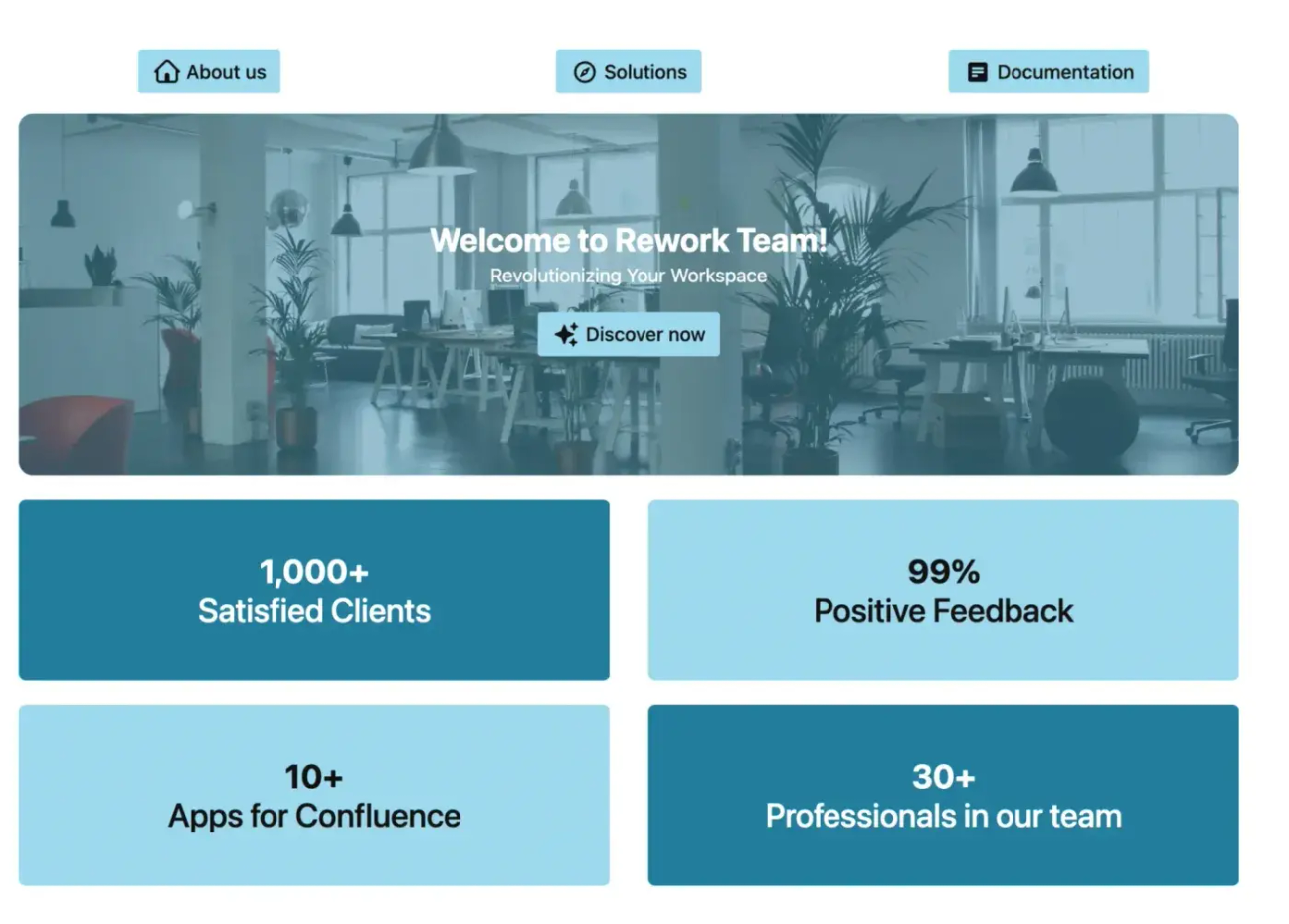How to get the most out of your Confluence instance: 10 top tips
Share on socials
How to get the most out of your Confluence instance: 10 top tips

Our tips:
Our tips:
1. Take time to learn it
2. Activate Confluence analytics
3. Use Confluence templates
4. Import content
5. Improve navigation
6. Use it for communication
7. Set the right permissions
8. Go beyond team spaces
9. Be an early adopter
10. Use AI features
Learn the secrets of Confluence and impress your colleagues! Here are our ten favourite tips to become a Confluence expert.
Atlassian Confluence is a feature-rich collaboration platform that offers wiki-like spaces for asynchronous teamwork, information sharing, and project management. If you're a knowledge worker, becoming a Confluence expert means digging deeper and learning features that might have value for your team.
Here are our top tips to make Confluence go further:
1. Learn Confluence beyond its defaults
Think of a default Confluence space as a starting point for collaboration that you need to build upon to meet your team's requirements. Customising your Confluence space is more than a nice thing to do. It helps provide a consistent experience for your users, including setting the sidebar with links to your calendars, analytics, and other Confluence features for quick user access.
A good starting place is integrating your team’s apps into Confluence. For example, you can integrate your Jira account with Confluence. You can also integrate other popular team applications, including draw.io, and Miro.
A good starting place is integrating your team’s apps into Confluence. For example, you can integrate your Jira account with Confluence. You can also integrate other popular team applications, including draw.io, and Miro.
2. Activate Confluence analytics
It’s good to know whether users are engaging with your content. Confluence Cloud Premium and Enterprise include Confluence analytics that enable you to view the performance of your content across Confluence spaces. This evidence saves you from relying on anecdotal stories and complaints, and it puts you in a better position to report progress and challenges to your management team.
3. Get pages set up quicker with Confluence templates
Confluence comes with built-in templates for various content use cases, but they’re not very engaging. Apps like Mosaic: Content Formatting Macros & Templates include visual templates for a range of use cases, including documentation, a knowledge base, and a project plan.

A Product/Service Homepage Template included in Mosaic for Confluence
Custom templates are especially beneficial if your organisation establishes content standards or has other special needs, such as authoring security or compliance documentation.
You can start creating Confluence templates from a blank page or by modifying a default template.
You can start creating Confluence templates from a blank page or by modifying a default template.
4. Import content into Confluence
Microsoft Word and Google Docs drive today's business and technology teams. Importing external documents is another way to flex your Confluence expertise, especially if you’re on a team that wants to author original content in their spaces and move beyond document libraries.
5. Improve Confluence navigation for your team
When users can't find something or find it too hard to deal with human nature, they'll work around it. Keeping Confluence navigation simple yet elegant is a move that demonstrates true Confluence expertise.
Here are some Confluence navigation best practices to follow:
Here are some Confluence navigation best practices to follow:
- Start each of your Confluence pages with a table of contents that maps automatically to the headings on the page.
- Use Child pages to create a custom list of content nested under a page.
- Create Confluence space shortcuts on the left sidebar for frequently accessed pages.
6. Turn your Confluence space into a communications channel
Ideally, you want your Confluence spaces to become integral to how your team communicates with each other and their internal stakeholders. Here are some ways you can do that for your team:
- Encourage team members to blog on Confluence about company news, updates, and lessons learned to improve the company culture.
- Make commenting on Confluence content a standard to improve communication across the team.
- Teach your team how to use inline comments when reviewing page content, especially if your team is remote or hybrid, to give a way to track reviews.
7. Set the right permissions for your users
Assigning the right Confluence permissions means users don’t have access to information they shouldn’t have. It also simplifies management and helps to keep information relevant.
If you’re a Confluence admin, you can access permissions via the Confluence settings section (represented by a cog icon).
If you’re a Confluence admin, you can access permissions via the Confluence settings section (represented by a cog icon).
8. Look beyond Confluence as a team space
While Confluence excels for team collaboration spaces, there are also space templates available from the “Create a space” option to create Confluence documentation, knowledge base, customer support site, or sites for your HR, finance, and legal teams.
9. Be an early adopter of Confluence features
If you find yourself with Confluence users asking for more, be an early adopter of beta and new Confluence features. For example, some of Atlassian’s newest features include Confluence Whiteboards and Confluence Databases.
Start small with a proof of concept when implementing beta features and demo it to your team. Offer to install the betas into a Confluence space of their choosing.
Start small with a proof of concept when implementing beta features and demo it to your team. Offer to install the betas into a Confluence space of their choosing.
10. Bring AI to Confluence
Generative AI is growing as a force in content creation and collaboration. Confluence administrators can enable Atlassian Intelligence, which promises actionable insights from your Confluence data. It lets you use generative AI to author Confluence pages with options to translate jargon and adjust tone.
Confluence apps are also beginning to embrace AI features, too. For example, Mosaic: Content Formatting Macros & Templates uses artificial intelligence to help you create interactive banners in seconds.
Confluence apps are also beginning to embrace AI features, too. For example, Mosaic: Content Formatting Macros & Templates uses artificial intelligence to help you create interactive banners in seconds.
We create tools to help people work efficiently
Check out our Confluence Apps to see how we can help you with your workload and start your free trial today.
Written by

Content Writer
Will Kelly is a freelance writer. After his earlier career as a technical writer, he’s passionate about easing collaboration pain points for teams, whether technology, process, or culture. He has written about collaboration for IT industry publications.



